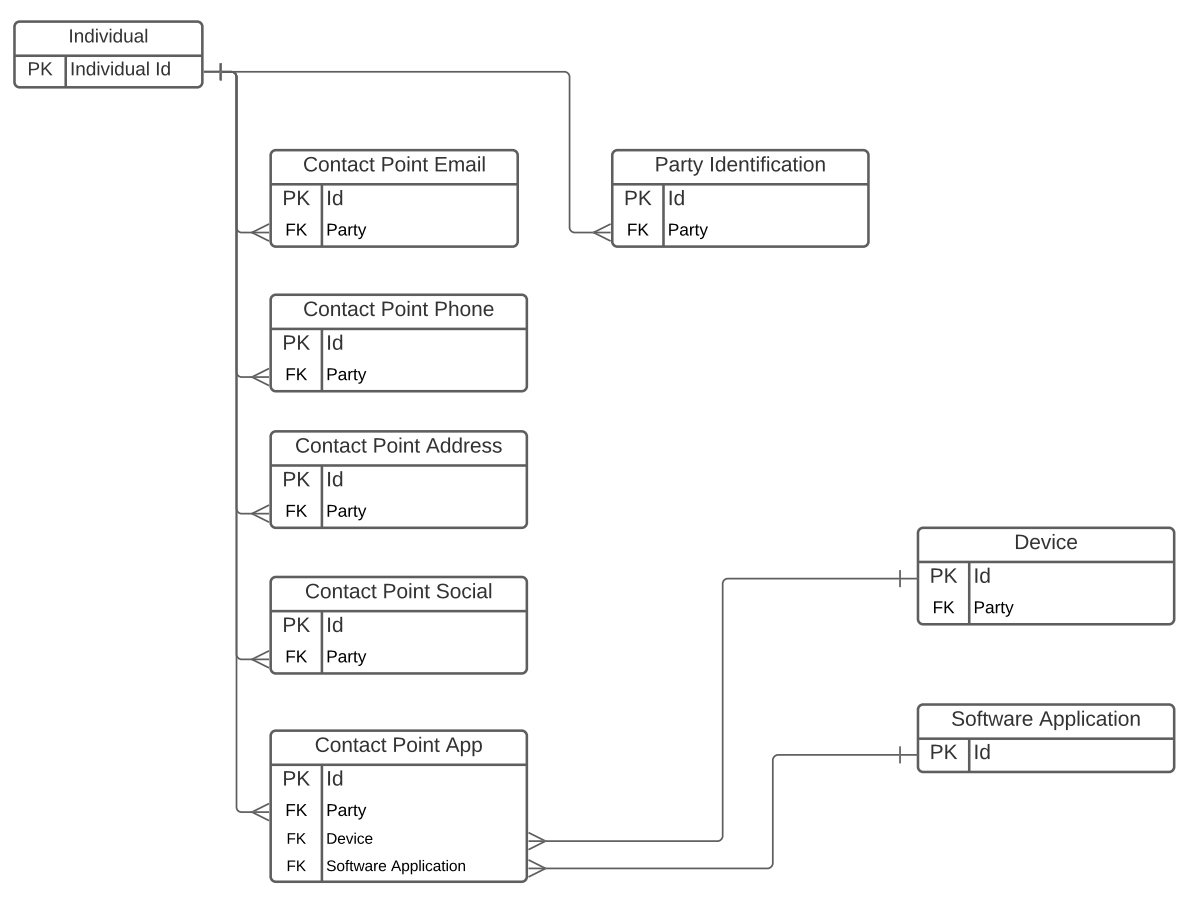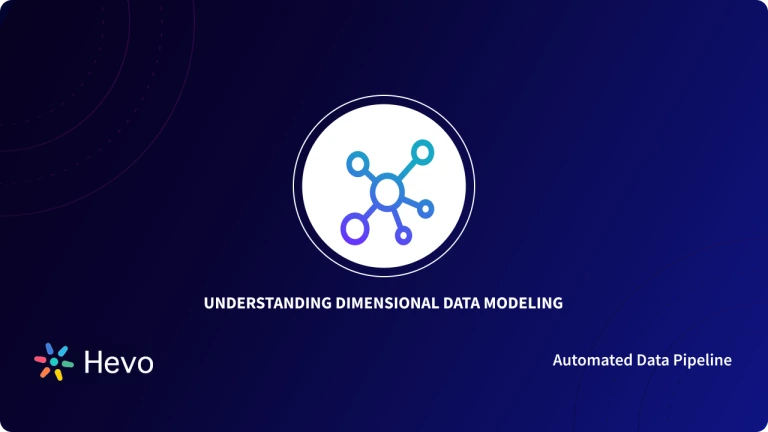Data Models are the key artifacts by which an organization represents and understands its data to itself. To properly comprehend the programs that capture, store, manage, alter, transform, remove, and distribute data, it is critical to understand the underlying structure of the data. Regardless of the underlying Database Technology, Conceptual Data Models are required.
Working with a Party Data Model establishes links between parties (entities) such as organizations and individuals. The super-type and subtype relationships are used in the model.
The supertype entity to the reference organization, i.e. the one that implements the model, is the party. The superior entity and the relative vantage point to the reference organization is the party.
All Information Technology systems cross-reference Core Business Entities, and their data quality and governance are intended to create business value. Creating the Core Business Entities is essential for any Master Data Management initiative. Master Data Management is a business model, not a technical solution. The Master Data is the system of record, the authority record.
In this blog, you’ll learn more about Party Data Models.
Hevo allows you to effortlessly transfer data from multiple sources into your data warehouse, making it easy to build your data model schema afterward. With Hevo’s no-code platform, you can manage the entire ETL process and focus on structuring your data in the warehouse of your choice.
- Automate data transfers from 150+ sources
- Perform pre- and post-load transformations
- Real-time data ingestion with minimal setup
Try Hevo and experience the seamless integration
Get Started with Hevo for FreeTable of Contents
What is Master Data Management?
Master Data Management (MDM) is a technology-enabled discipline in which business and information technology collaborate to maintain the enterprise’s official shared master data assets’ uniformity, accuracy, stewardship, semantic consistency, and accountability.
Master Data Management is made possible by technology, but it is more than that. People and processes will be included in the definition of an organization’s master data management capabilities, these are:
1) People
Within MDM, several jobs should be filled. Most notably, the Data Owner and Data Steward. Each position would most likely be assigned to numerous people, with each person responsible for a portion of Master Data (e.g. one data owner for employee master data, another for customer master data).
The Data Owner is accountable for meeting data quality, security, and other standards, as well as adhering to data governance and data management protocols. In the event of departures from the requirements, the Data Owner should also fund improvement programs.
The Data Steward manages master data on behalf of the data owner and is most often an advisor to the data owner.
2) Process
A Data Governance Organization’s policies and procedures define Master Data Management as a “Discipline For Specialized Quality Improvement.” Its goal is to provide methods for Gathering, Aggregating, Matching, Consolidating, Quality-Assuring, Persisting, and Disseminating Master Data throughout an organization to assure Common Knowledge, Consistency, Accuracy, and control in the data’s ongoing maintenance and application use.
Source Identification, Data Collection, Data Transformation, Normalization, Rule Administration, Error Detection and Correction, Data Consolidation, Data Storage, Data Distribution, Data Classification, Taxonomy Services, Item Master Creation, Schema Mapping, Product Codification, Data Enrichment, Hierarchy Management, Business Semantics Management, and Data Governance are all common processes in Master Data Management.
3) Technology
In order to provide an Authoritative Source of Master Data, a Master Data Management tool can be used to help Master Data Management by removing duplicates, standardizing data (mass maintenance), and implementing rules to prevent inaccurate data from entering the system. The items, accounts, and parties for which commercial transactions are completed are referred to as master data.
It is usual to refer to where the data is “mastered” when the technical method generates a “golden record” or relies on a “source of record” or “system of record.” This is a common language in the information technology sector, however, it is important to avoid conflating the concepts of “master data” and “mastering data” with professionals and the broader stakeholder community.
What are Party Data Models?
The Party Data Model specifies who and how you have trading ties. For example, customer and supplier information, including phone numbers and email addresses. In Salesforce CDP, the following objects from the Party subject area are represented.

the Party Data Model does this by describing its entities as party-type records rather than one table per object. As a result, the database is extremely standardized, with few tables and minimal understanding of the semantic meaning of the data it stores.
All of that information is then applied to data access in code. Because the schema never changes, database upgrades utilizing the party model are minimal to none. It’s just a renamed key-value pair data model structure with a few extra properties.
Working with Party Data Models
Here are a few examples of Party Data Models that can be used:
1) Physical Party Data Model
The Party Physical Data Model implements the Organization in the relationship as a Party (with primary key) to the Organization (foreign key/Primary Key).
Similarly, for the Party: Person and Individual, the PartyId (PK) in the Party table corresponds to the IndividualPartyId (FK/ PK) in the Individual database.
Other than establishing a highly explicit relationship, the model has virtually little meaning.
Relationships have power because of the association of parties, such as tying persons (individuals) to the organization as the bill-of-material (BOM) —2016 – Jean-Marc Reynaud– of the organization. Because its assemblies and subcomponents are equal, the BOM design is simple but powerful and fits the supertype-subtype model. Any other assembly that can use a defined assembly can use it.
What Goes Into the Party Data Table?
The supertypes. These should not be defined in detail, i.e. with attributes restricted to specific subtypes. General, top-level entities and their many properties
WHAT NOT TO DO
Despite being an entity, an organizational location (address) is not a supertype due to certain properties. The address should not be listed in the Party table, but rather in a separate table called Adress. The same is true for other entities like Asset, Products, Agreement, Events, Campaign, Channel (CRM), claims (Insurance), and so on. These are represented as their own relative supertypes and are linked to Party via the join-table PartyEntity>.
WHAT SHOULD BE DONE
A Party is a specific Organization or Person/Individual. In relation to the reference organization, an internal organization is where the organizational classification is established, for example, by utilizing the Internal Organization Type Code to identify departments or divisions.
2) Organization Party Data Model
A Party is an organization that can be external or internal. Externally, the party represents a legal entity, such as a firm or an association, that is responsible for fiscal accounting. Internally, an organization is a collection of things that represent the organization’s composition, similar to how a bill of materials (BOM) would represent the assembly of a motor vehicle.
Looking within, the reference business evaluates the internal organization in terms of structure, people, and other characteristics such as location, contacts, products, campaigns, and so on. The external organization is the description of a company as a legal entity, i.e. the etiquette hanging from the box containing the descriptions of the interior organizations.
“A well-understood large picture of the company must be collected and shared in the form of a model,” according to Teradata.
Organizations are classified into many types, such as financial services, retail, telecommunications, and so on. Each is modeled in relation to a reference business that belongs to one of these strata.
As a result, if it is financial services, the Organization specialization flows from the Organization tables to the necessary [Organisation|Institution] subtypes. The data model (below) is extendable via the Organisation table, which models industry-specific models for the external and internal classifications of organizations.
Pros of Party Data Models
Let’s dive into some benefits of Party Data Models:
- Horizontal scalability at its finest: Once your entity model’s 5-6 tables are established, you can go to the beach and consume margaritas. With minimal effort, you can virtually grow this database as much as you desire.
- Flexible Data Structure: You throw at it will be supported by the database. You can also alter data structures and party/entity definitions on the fly without having to restart your application. This is quite effective.
- Easy Addition: By adding records rather than modifying the schema, you can model any arbitrary data entity. That means you can say farewell to schema migration scripts.
Cons of Party Data Models
Let’s look into some limitations of Party Data Models:
- ORMs never work well with party/entity models: So forget about using Entity Framework or NHibernate to extract semantically meaningful entities from your entity database.
- There are numerous joins: Performance tuning difficulties. This ‘con’ is dependent on the techniques you use to define your entities, but it’s safe to assume you’ll be doing a lot more of those mind-bending queries that give you nightmares at night.
- Consumption is more difficult: Developers and database administrators who are unfamiliar with your company’s operations will have a more difficult time adapting to the entities revealed by these models.
Conclusion
One of the most significant factors to consider when choosing an MDM tool is the technology’s ability to support various methods of identifying a Party. In the data model, I’ve seen several names used to refer to a Party. The application is determined by the industry and the use case.
Hevo Data is a no-code data pipeline that can instantly connect multiple sources. Integrating and analyzing data from a large number of disparate sources can be difficult; this is where Hevo comes in.
Hevo Data, a No-code Data Pipeline helps you to transfer data from a source of your choice in a fully automated and secure manner and without having to write the code repeatedly. Hevo with its strong integration with 150+ sources, allows you to not only export & load Data but also transform & enrich your Data & make it analysis-ready in a jiffy.
Want to take Hevo for a spin? Sign Up for a 14-day free trial and experience the feature-rich Hevo suite first hand. You can also have a look at our unbeatable Hevo pricing that will help you choose the right plan for your business needs!
Share your learning experience of Understanding Party Data Models in the comment section below!
Frequently Asked Questions
1. What is the party model?
The “Party Model” typically refers to a framework used in data management and customer relationship management (CRM) systems to represent individuals and organizations (parties) that interact with a business.
2. What is 1st, 2nd, and 3rd party data?
These terms refer to different types of data based on its source and how it is collected.
3. What is 3 party data?
3rd party data is essentially aggregated data collected by entities that do not have a direct relationship with the end user. This data is often sold or licensed to businesses to help them enhance their customer profiles, target advertising, and gain market insights.




